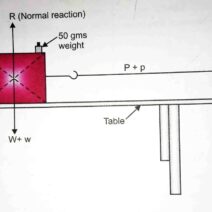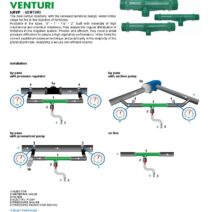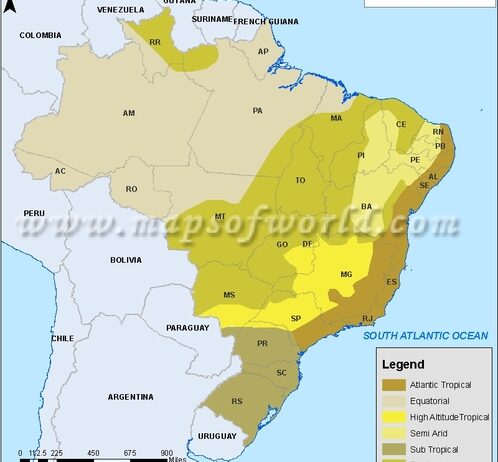The climate in Brazil is as diverse as its rich culture and stunning landscapes. From the tropical jungles of the Amazon to the temperate climate of the south, Brazil’s seasonal variations create an intricate environmental tapestry. Understanding this climate is crucial for those with an interest in environmental sustainability, agriculture, tourism, and urban planning. In this article, we delve into the climatological nuances across several regions, focusing on their implications for the environment and society.
Brazil’s geographical expanse leads to a multi-faceted climate that can be categorized primarily into five distinct climatic zones: equatorial, tropical, semi-arid, temperate, and highland. Each zone offers unique temperature patterns, precipitation distributions, and ecological characteristics.
Equatorial Climate: The Lush Humid Heart
The northern regions of Brazil, particularly the Amazon rainforest, experience an equatorial climate characterized by consistently high temperatures and humidity levels. Average temperatures hover around 26-28°C (79-82°F) throughout the year. This climatic zone is marked by heavy rainfall, often exceeding 2,000 mm annually, which sustains the world’s largest tropical rainforest. The abundance of rain, combined with high temperatures, creates an environment ripe for biodiversity, making the Amazon one of the most ecologically important regions on the planet.
However, this lushness faces substantial threats from deforestation, driven by agricultural expansion, logging, and mining activities. The implications of climate change compound these issues, reducing rainfall patterns and increasing temperatures. The disturbance of this climatic equilibrium can have dire consequences not just for Brazil but for global ecosystems.
Tropical Climate: The Dynamic Pulse of the Heartland
As we move southward, we encounter Brazil’s tropical climate, prevalent in regions such as the central-west, including the Pantanal and Cerrado biomes. Characteristic of this climate are marked wet and dry seasons. The wet season typically extends from October to March, bringing torrential rains, while the dry season prevails from April to September, where temperatures can rise significantly, reaching up to about 30-35°C (86-95°F).
This seasonal fluctuation provides a unique climatic environment that supports extensive agriculture, especially soybeans and cattle ranching. Yet, these economic activities pose a threat to sustainability. Converting natural habitats into farmland leads to soil degradation and biodiversity loss. The challenge lies in balancing agricultural productivity with sustainable practices, ensuring that the land can support future generations.
Semi-Arid Climate: The Resilience of the Northeast
The Brazilian Northeast is home to a semi-arid climate, notable for its extended drought periods and irregular rainfall, averaging between 500 to 800 mm annually. Temperatures in this region are high, often exceeding 35°C (95°F) during the dry season. The lack of sufficient rainfall results in challenges for agriculture and water supply, placing the local population at risk.
Despite these hardships, the inhabitants have adapted through traditional farming methods. Crop diversity, such as drought-resistant varieties, and agroforestry systems help maintain soil health and ensure food security. Furthermore, understanding climate patterns is vital for resource management and planning, particularly in relation to water conservation measures.
Temperate Climate: A Southern Sojourn
In stark contrast to the tropical north, Brazil’s southern regions—encompassing states like Rio Grande do Sul, Santa Catarina, and Paraná—experience a temperate climate. This area features four well-defined seasons: summer, autumn, winter, and spring. Summer months can be pleasantly warm, averaging between 20-30°C (68-86°F), while winter brings cooler temperatures, often dipping to around 0°C (32°F).
Such climatic conditions support diverse agriculture, including wineries and olive groves alongside traditional crops. The ideal temperatures and regular rainfall patterns in the south create opportunities for both economic growth and ecological conservation. However, climate variability, including shifting precipitation patterns related to climate change, challenges farmers to adapt their practices continually.
Highland Climate: The Andes’ Embrace
Brazil’s highland climate, found primarily in the Andes region, is characterized by cooler temperatures and increased precipitation. These mountainous terraces offer vital services, such as water regulation and biodiversity hotspots, which are critical for local and regional ecosystems. The temperatures can range widely due to elevation, necessitating diverse agricultural practices suitable for the various altitudes.
Addressing Climate Impacts on Brazil’s Biodiversity
Brazil’s diverse climates not only foster rich ecosystems but also highlight the country’s vulnerability to climate change. Warming temperatures, shifting precipitation patterns, and deforestation activities pose significant threats to biodiversity. The government and environmental activists strive to promote policies aimed at mitigating climate impacts through reforestation, sustainable agriculture, and eco-tourism initiatives.
In conclusion, understanding Brazil’s climatic variations is essential for advancing environmental sustainability. The challenges posed by climate change, along with the need for effective resource management, demand collaboration across various sectors. With proactive measures and increased awareness, Brazil can work toward a resilient future, balancing economic development with ecological integrity.





